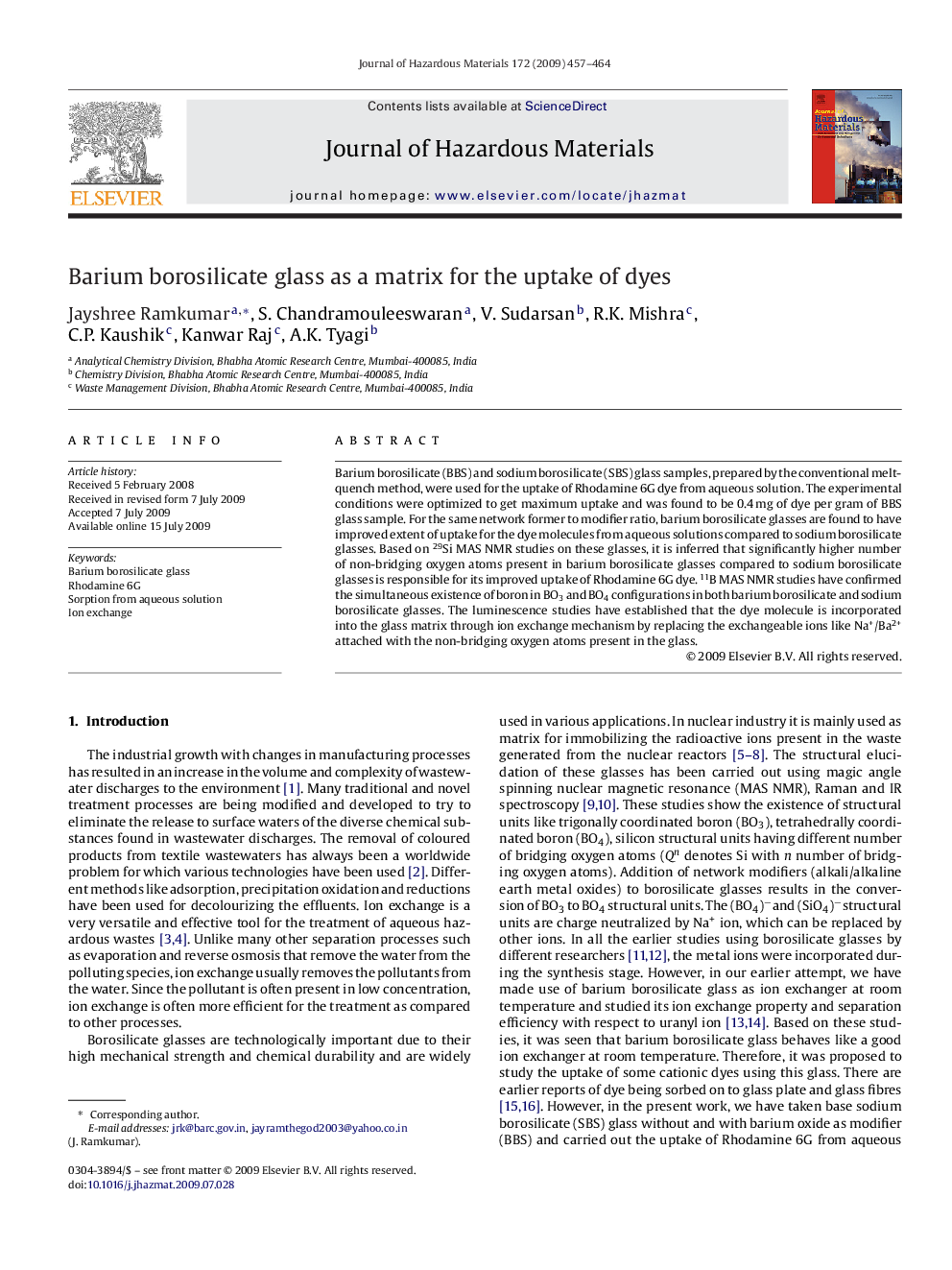| Article ID | Journal | Published Year | Pages | File Type |
|---|---|---|---|---|
| 581087 | Journal of Hazardous Materials | 2009 | 8 Pages |
Abstract
Barium borosilicate (BBS) and sodium borosilicate (SBS) glass samples, prepared by the conventional melt-quench method, were used for the uptake of Rhodamine 6G dye from aqueous solution. The experimental conditions were optimized to get maximum uptake and was found to be 0.4Â mg of dye per gram of BBS glass sample. For the same network former to modifier ratio, barium borosilicate glasses are found to have improved extent of uptake for the dye molecules from aqueous solutions compared to sodium borosilicate glasses. Based on 29Si MAS NMR studies on these glasses, it is inferred that significantly higher number of non-bridging oxygen atoms present in barium borosilicate glasses compared to sodium borosilicate glasses is responsible for its improved uptake of Rhodamine 6G dye. 11B MAS NMR studies have confirmed the simultaneous existence of boron in BO3 and BO4 configurations in both barium borosilicate and sodium borosilicate glasses. The luminescence studies have established that the dye molecule is incorporated into the glass matrix through ion exchange mechanism by replacing the exchangeable ions like Na+/Ba2+ attached with the non-bridging oxygen atoms present in the glass.
Keywords
Related Topics
Physical Sciences and Engineering
Chemical Engineering
Chemical Health and Safety
Authors
Jayshree Ramkumar, S. Chandramouleeswaran, V. Sudarsan, R.K. Mishra, C.P. Kaushik, Kanwar Raj, A.K. Tyagi,
